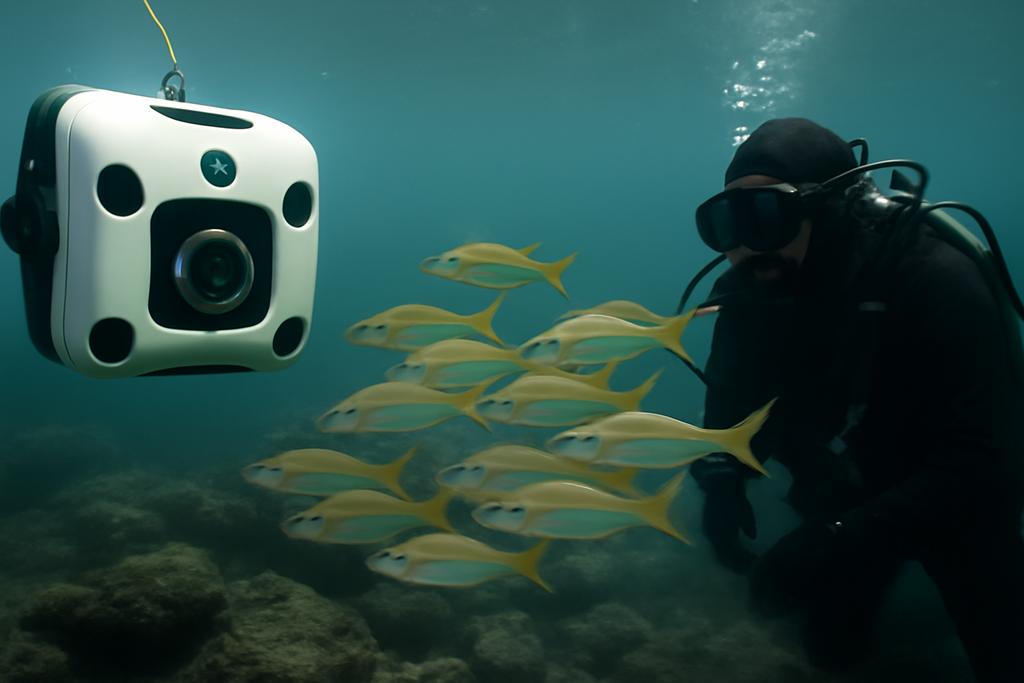Imagine a world where we could effortlessly monitor fish populations, understand their behavior, and safeguard marine ecosystems with the help of tireless, underwater robots. This isn’t science fiction anymore. A groundbreaking new study from the Khalifa University Center for Autonomous Robotic Systems (KUCARS), Abu Dhabi, led by Muayad Abujabal, Lyes Saad Saoud, and Irfan Hussain, dramatically advances the technology needed to build such a future. Their work centers around FishDet-M, a massive new benchmark dataset that’s pushing the boundaries of underwater computer vision.
The Challenge of Seeing Underwater
Before we dive into the details, let’s appreciate the sheer difficulty of the task. Underwater photography is notoriously tricky. Think of the murky depths of a lake, the shimmering chaos of a coral reef, or the strange, filtered light in a fish tank. These environments are visually complex, with obstacles, moving water, and changing light conditions affecting image clarity and impacting the accuracy of any automatic fish-counting system.
Previous attempts to teach artificial intelligence to identify fish in underwater images have been hampered by a lack of good data. Existing datasets were often small, contained only a limited variety of species or underwater situations, and lacked consistent labeling. This is like trying to teach a child to identify different types of birds by showing them only a handful of robins in a single park. The child might learn to identify robins, but they won’t be able to tell a sparrow from an eagle.
FishDet-M: A Gigantic Leap Forward
FishDet-M changes the game by consolidating 13 previously separate datasets into a unified, massive resource. This means there’s now a much larger and more diverse pool of images for training AI models, encompassing a wide variety of species, aquatic settings (from coral reefs to fish farms to murky tanks), and visual challenges. This is like providing that child with a vast encyclopedia of birds, illustrated with hundreds of photographs taken in many different habitats. The result is a much richer, more robust learning experience.
The sheer scale of FishDet-M is staggering. It contains over 100,000 images and almost 300,000 annotated fish instances. The researchers standardized all annotations, meaning the data is now consistently formatted and ready for use by any research team. They’ve also made the entire dataset publicly available, encouraging collaboration and accelerating innovation in the field.
Beyond Simple Counting: CLIP-Guided Model Selection
This isn’t just about counting fish. The researchers also developed a smart system to select the best AI model for each image. They used a cutting-edge technology called CLIP (Contrastive Language–Image Pre-training), which excels at understanding the relationship between images and text descriptions.
Their system works by comparing the image to various textual descriptions representing the strengths and weaknesses of different AI models. For example, one model might be particularly good at identifying small fish in murky water, while another excels at distinguishing between closely related species in clear water. By analyzing the image and its visual characteristics, CLIP can choose the optimal AI model to perform the detection, maximizing accuracy.
This dynamic model selection is like having a team of specialized experts, each with particular skills, ready to tackle any situation. Instead of using a one-size-fits-all approach, you have the flexibility to match the tool to the job, making the whole process much more effective.
What Does This All Mean?
The implications of FishDet-M are far-reaching. Accurate fish detection is crucial for ecological monitoring, helping us understand how fish populations are changing over time and identify potential threats to their survival. In aquaculture, it could lead to automated fish counting, size estimation, and early detection of diseases, boosting efficiency and sustainability in fish farming.
For underwater robotics, FishDet-M allows for better navigation systems and more sophisticated interactions with the underwater environment. Imagine underwater robots autonomously surveying coral reefs, taking samples, or conducting maintenance tasks with far greater precision and reliability.
The Future of Underwater AI
Despite these impressive advances, the researchers acknowledge that challenges remain. Complex scenes, such as densely packed schools of fish or those camouflaged against the background, continue to test the limits of current AI. But the progress is clear and significant. FishDet-M is a massive step forward, and it’s paving the way for a future where AI helps us understand and protect our oceans more effectively.
The creation of FishDet-M represents a significant advance in the field of computer vision. It’s a testament to collaborative research efforts and underscores the importance of openly sharing datasets to accelerate innovation. The future of underwater AI is looking brighter, thanks to this remarkable accomplishment.










